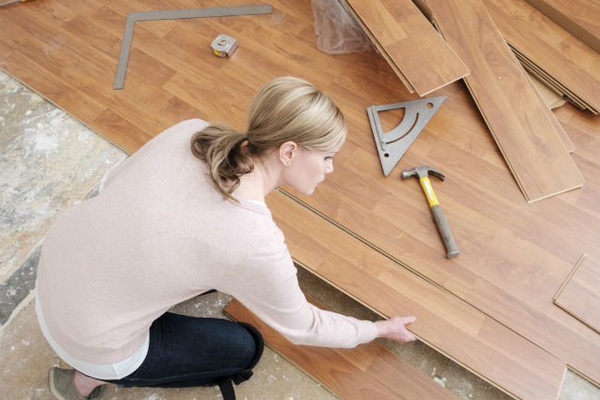
Like cupping and buckling, crowning is a defect a wood floor can develop when exposed to moisture. ( crowned floor ) If the floorboards absorb humidity from the air or moisture from the subfloor, they can swell and push against each other. This may cause the centers of the boards to bulge, or crown. You can sand them flat with floor sanding equipment as long as they aren’t engineered with a veneer and they haven’t been over-sanded.
Causes of Crowning
Wood is a living material, and it continues to respond to the environment even after you nail it to a subfloor. Crowning and cupping are natural responses to moisture absorption, and a certain amount of either defect is usually considered acceptable. Crowning becomes a problem when an extreme condition, such as a broken pipe or excessive humidity in the room, causes the centers of the boards to rise high enough to be obvious and unsightly. When the boards shrink as they dry out, large gaps may form between them, adding to the unsightly appearance of the floor.
Drying the Floor
You have to completely dry a crowning floor before you can repair it. This may involve running a dehumidifier in the room if excessive humidity caused the defect. It may also be necessary to ventilate the underside of the floor, perhaps by running a fan in the basement or crawl space. The floorboards will probably shrink as they dry, and it’s better for this to happen before you make repairs than after. If you decide that repairing the floor is worth the effort of sanding it, you’ll be able to fill the gaps as part of the procedure.
The Feasibility of Repair
It takes a floor sander and a coarse grit of sandpaper to flatten a crowned floor, and you may have to remove as much as 1/4-inch of wood from the boards, depending on the amount of warping. This is only feasible with solid wood boards; you will probably destroy engineered boards by wearing through their veneer. Even a solid floor may not be a good candidate for this procedure if it has been sanded before, because the tops of the grooves may already be too thin. An examination of a cross-section of the floor in a doorway should help you gauge the thickness and composition of the boards.
The Repair Procedure
Refinishers use an aggressive sanding technique to flatten warped floorboards. They fit a drum sander with 20-grit sandpaper, which is the coarsest available, and run the sander diagonally across the floor. The coarse paper removes a large amount of material, but it also creates cross-grain scratches, so it’s important to run the machine parallel to the grain with the same paper after the diagonal pass is complete. Two or three parallel passes with progressively finer paper smooth the floor and make it ready for finishing. Sanding the edges with a flooring edger, using the same grit of sandpaper as you’re using for the drum sander, ensures uniformity in the floor’s appearance.
by: chris Deziel




